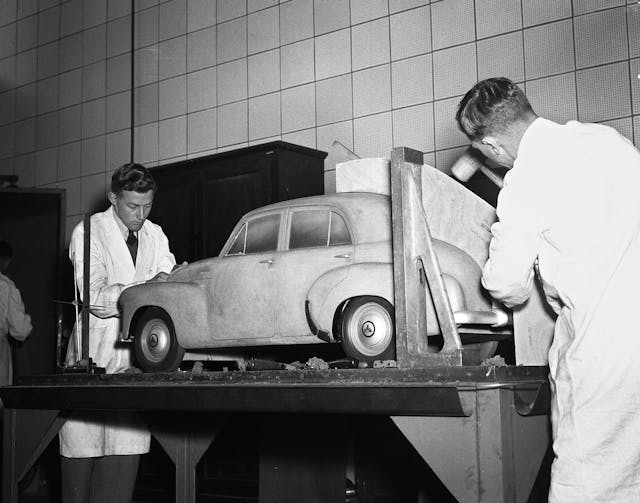Media | Articles
Down and out down under: The fall of Holden
The Studebaker brothers were just starting their buggy works in 1852 and Henry Ford was 11 years shy of being born when James Alexander Holden, a leatherworker and saddle maker from Staffordshire, England, boarded a ship bound for Australia. J.A. Holden and Company of Adelaide eventually got into auto upholstery, then motorcycle sidecars, and then in 1914, harnessing its carriage-making skills, it produced its first full car body.
When the Depression hit, Holden’s Motor Body Builders was Australia’s largest car-body supplier, but the dire economy caused Holden to collapse into the arms of its biggest customer, General Motors Australia. This past February, GM announced that it will retire the 164-year-old Holden brand and retreat from Australia completely, as well as New Zealand and Thailand, by 2021 as part of a shift of resources away from unprofitable markets and toward electrification and automation.
It wasn’t the first overseas brand to suffer death-by-GM; Daewoo and Saab preceded Holden to the General’s private dustheap. And it wasn’t a surprise. GM shut Holden’s only assembly plant in Elizabeth, South Australia, back in 2017, the same year it abandoned Europe and sold its Opel and Vauxhall units to France’s PSA Group, the maker of Peugeot and Citroën.
Holden dies leaving great memories. On November 29, 1948, Holden unveiled Australia’s first truly native car, the 48-215. Never mind that the prototypes had been built in Detroit or that the car was a smashup of contemporary Buick and Chevy styling rendered in cartoonishly pint-size proportions. It was designed mainly by Australians and built entirely in Australia. In 1951, Holden introduced the first ute—half-car, half-pickup, all Aussie.

Holden’s styles moved mainly with the changing fashions. In the 1950s, the cars resembled shrunken Tri-Five Chevys. In the ’60s, the look was clean and mid-century, with shades of Corvair and Chevy II. The Holden Monaro sports coupe debuted in 1968 featuring optional Chevy 307 and 327 V-8 engines, and Detroit’s Big Three fought a proxy war in Australia, in the dealerships and on the track. The annual enduro race at Bathurst serves as the antipodean equivalent to the Indy 500, and Holden’s main shoe, Peter Brock, was a nine-time winner and a household name.
Marketplace
Buy and sell classics with confidence
Almost since the beginning, Holden’s business was dependent on protectionist tariffs first instituted during World War I. The Australian government—and, by extension, Australian taxpayers—shoveled in billions in subsidies over the decades to preserve local auto manufacturing in this small market, but it couldn’t last. The first seeds of Holden’s demise were planted in the 1960s, when Australia began relaxing its import rules, leading to a flood of new competitors, especially from Japan.

In the 1980s, the country further cut tariffs on fully assembled imports, making local manufacturing less attractive. Mitsubishi, which had purchased Chrysler’s local operations in 1980, closed its South Australia plant in 2008. Ford ceased Falcon production at its Broadmeadows complex north of Melbourne in 2016, ending 90 years of Ford assembly in Australia. A year later, Toyota, which had become the country’s largest carmaker, also quit, closing the Altona plant near Melbourne that produced Camrys and engines.
For a brief time, Holden looked like it might find salvation in exports. The Middle East was always one receptive market, and former GM vice chairman Robert Lutz engineered a plan to bring Holdens to America as the 2004 Pontiac GTO and 2008 Pontiac G8. But the 2008 economic meltdown crashed the scheme as well as the whole Pontiac division. Chevy picked up the reins for a while, marketing the Commodore as the Caprice PPV to police agencies and as the Chevrolet SS to the public, but that ended with the plant closure in 2017.
Ultimately, it’s the things that make Australia special, including its isolation and small population, that eventually undid its native car industry.
This story originally appeared in the May/June 2020 issue of Hagerty Drivers Club magazine.










fomoco australia made the first ute 1934 geelong victoria